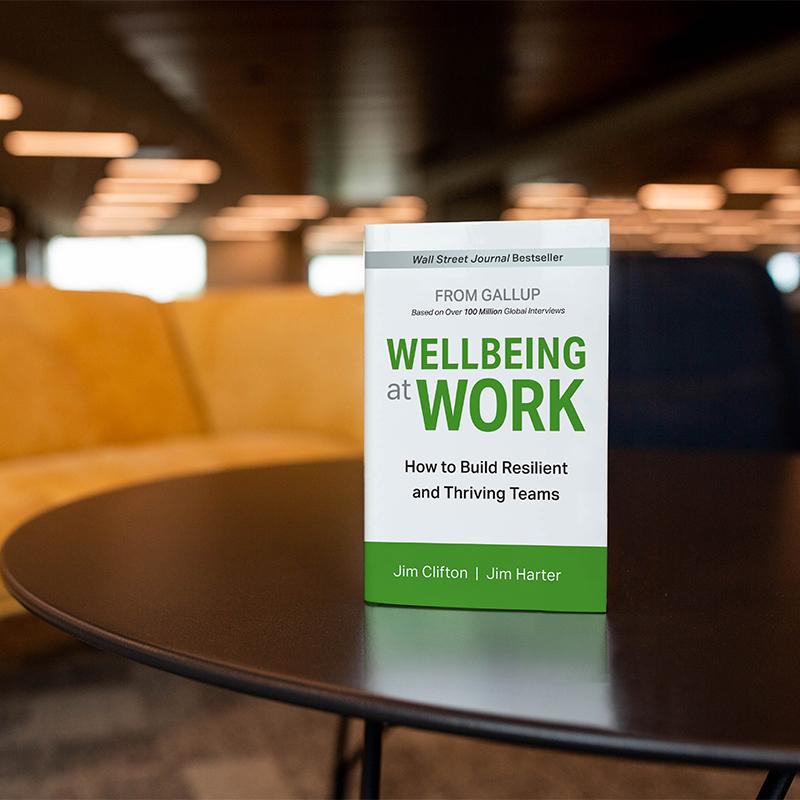Employee Wellbeing Is Key for Workplace Productivity
When your employees' wellbeing is thriving, your organization directly benefits -- they take fewer sick days, deliver higher performance, and have lower rates of burnout and turnover. But when your employees' wellbeing suffers, so does your organization's bottom line.
What is the cost of poor wellbeing?
The impact of wellbeing extends far beyond how people feel -- it affects the number of sick days employees take, their job performance, burnout and likelihood of leaving your organization. Here are just some of the costs of poor wellbeing:
75%of medical costs accrued mostly due to preventable conditions
$20 millionof additional lost opportunity for every 10,000 workers due to struggling or suffering employees
$322 billionof turnover and lost productivity cost globally due to employee burnout
15% to 20%of total payroll in voluntary turnover costs, on average, due to burnout
The good news is that your organization can do something about it and take steps to improve employee wellbeing.
What is wellbeing?
We take a holistic approach to wellbeing. It isn't just physical fitness or eating well. It's about how people's lives are going.
Wellbeing encompasses all the things that are important to each of us and how we experience our lives.
How Gallup Measures Employee Wellbeing
Our aim is to discover and quantify the difference between the best possible life -- and the alternative. Because wellbeing encompasses everything that is important to an individual, we should measure and improve it so that people and their organizations can thrive. We've identified a metric you can use to track suffering, struggling and thriving among your employees: Gallup Net Thriving.

Gallup Net Thriving is "the other GDP" for countries or "the other stock price" for organizations. And much like stock price indicates current and future earnings, Gallup Net Thriving assesses the current and future resiliency of your workforce.
Gallup Net Thriving is derived from a simple, two-part question that sorts people into one of three wellbeing categories:
Thriving: people with positive views of their present life and of the next five years
Struggling: people who struggle in their present life and have uncertain or negative views of the future
Suffering: people who report their lives are miserable and have negative views of the future
What are the five common elements people need to thrive in their lives?
In partnership with leading economists, psychologists and other scientists, we studied wellbeing in more than 98% of the world's population. The five common elements that people need to be thriving involve aspects of life that you can do something about.
We find that the most important element -- and the foundation for the other four -- is career wellbeing.

Career Wellbeing You like what you do every day.

Social Wellbeing You have meaningful friendships in your life.

Financial WellbeingYou manage your money well.

Physical WellbeingYou have energy to get things done.

Community WellbeingYou like where you live.
Wellbeing affects employee engagement.
We know that engaged employees produce far better outcomes, but Gallup recently discovered that engaged workers who are not thriving in their lives are much more vulnerable and add risk to your organization.
Comparing employees who are engaged but not thriving with those who are engaged and thriving, those who aren't thriving report the following risks:
61% higher likelihood of burnout often or always
48% higher likelihood of daily stress
66% higher likelihood of daily worry
Double the rate of daily sadness and anger
This relationship is also reciprocal. As mentioned, career wellbeing is the foundation for the other wellbeing elements. And employee engagement is the single biggest driver of career wellbeing.
In the absence of a good job and fulfilling career, there is no net thriving. When organizations intentionally address both wellbeing and engagement, the effects are additive and mutually beneficial for employees and business outcomes alike.
Foster a culture of holistic wellbeing at your organization.
Despite the sizable investments organizations make in wellbeing initiatives, a disconnect persists. Help your employees confidently answer "yes" when asked if your organization cares about their wellbeing.
We partner with your organization to establish a workplace wellbeing strategy that helps your people and your business -- all while aligned with your organization's unique purpose, brand and culture.
1 in 4 U.S. employees strongly agree their organization cares about their overall wellbeing.
1. Diagnosing Needs
We help you identify wellbeing opportunities and understand the connections among wellbeing, processes and performance.
We help you prioritize wellbeing programs that align with employee needs, as supported by the seven catalysts of wellbeing.
We help you equip employees with the knowledge and tools to take a more holistic view of wellbeing and create an action plan for themselves and their team.
Partner with us about how to help improve your wellbeing today
Partner with employees to boost their wellbeing.
We've identified seven catalysts that employers can use to support and change their employees' wellbeing behaviors. Each of the seven catalysts can be used to address and better support employees across the five elements of wellbeing.
Development: Do your development plans include wellbeing goals?
Recognition: Do you share and celebrate wellbeing successes?
Communication: Are your messages, especially from leaders and managers, consistent with a high-performing and net thriving culture?
Incentives: Do they inspire participation in activities that produce results?
Events: Do they build awareness of net thriving culture and change behaviors?
Rules and Guidelines: Do they work for or against thriving in each of the five elements?
Facilities: Is it easy to move around your office space, see outdoors and collaborate?
"All organizations should be concerned about employees' mental health. This is especially true amid disturbing social trends, particularly in the U.S." -- Wellbeing at Work, 2021
Mental health is multifaceted and can mean different things to different organizations. We have studied how various workplace and life elements predict future mental health-related states. For example, we know that:
- A culture of high engagement predicts lower likelihood of new incidents of depression and anxiety.
- The five elements of wellbeing predict daily emotions and states of thriving, struggling and suffering.
Gallup can help organizations develop a workplace culture that reduces the risk of mental health-related factors like stress and worry.
-- Jim Harter, Ph.D.

Learn more about our book, Wellbeing at Work, and lead your organization to a thriving and resilient future.
Featured Insights
Help improve wellbeing today.
Get in touch with a Gallup expert to learn how we can help you measure and improve employee wellbeing for better business outcomes.